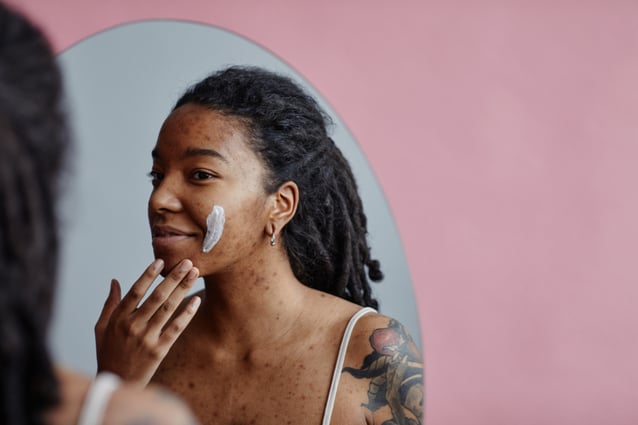Natural healing says that acne is fundamentally the result of the body attempting to eliminate wastes through the skin. In Ayurveda, the condition translates as “that which comes out from the inner part to the outer part.” For your poor complexion connection, herbal medicine has some very good answers.
Herbal Detox for Acne
Herbal medicine systems treat acne for the long run by reducing skin inflammation, healing skin tissue if necessary, and eliminating the source of irritating wastes (sometimes called “toxins”) through the liver, kidneys, and large intestine.
These undesirable substances, whether from outside (pesticides, pollution, etc.) or inside the body (retained cellular wastes), aggravate the skin, leading to persistent inflammation.
Herbal detoxifiers are called “alteratives.” These are basically remedies that assist the body in elimination through the kidneys, liver, or large intestine. Many classic alteratives turn out to be powerful antioxidants, with turmeric a great example.
Gotu Kola for Acne
Gotu kola heals an assortment of degenerate skin conditions, including acne. This herb promotes the tensile integrity of the skin, and increases keratinization in the skin, so it can actually heal and re-grow new skin, gently repairing even long-standing lesions. Many studies have shown striking results in the treatment of even the most dramatically damaged skin.
An exciting study of gotu kola for extreme inflammatory skin disease was done over twenty-five years ago. Using a very conservative dose, gotu kola was effective in 85% of the patients. Russian scientists repeated the experiment and duplicated the results. European and Indian researchers, in several new studies, confirmed that gotu kola compounds promote rapid skin healing.
A paper in The International Journal of Food Science and Nutrition indicates that gotu kola is a rich source of the anti-inflammatory antioxidant quercetin.
The actives are thought to be triterpenes, which have a balancing effect on connective tissues, improving the basic “glue” that holds the cells of our bodies together. A 2013 review article confirmed this, and concluded that gotu kola was effective in the skin for healing and reducing inflammation.
A 2012 paper looked at various gotu kola extracts, and confirmed that alcohol and water preparations were beneficial, confirming the historical use as tea and skin cream.
For acute acne, use one ounce of dry herb, by weight, as a tea, per day.
Licorice for Acne
Chinese licorice root (Glycyrrhiza uralensis) lessens skin inflammation, and is the foremost herb for skin diseases in East Asia. It contains steroid-like substances that can be taken internally or applied in a cream. A study published in The British Journal of Dermatology underlines the effect of this herb in skin inflammation. Thirty-seven children took a Chinese herbal medicine containing licorice. Twelve months later, 18 of the children demonstrated at least a 90% reduction in their disease symptoms.
Licorice has also long been used topically. Recently, scientists found that a moisturizing cream containing extracts of licorice, holy basil, Andrographis and green tea controlled acne-causing bacteria (Staphylococcus epidermis and Propionibacterium) with no skin irritation.
Chinese Violet for Acne
For an effective acne remedy, seek out Chinese violet (Viola yedoensis) and use the whole plant, including leaf and root, of the perennial herb. Violet is bitter and cold, so it targets inflammation. It disperses heat that is stuck in the skin. In terms of clearing heat, detoxifying and of reducing swellings and dissolving lumps, it is equivalent to dandelion herb, another classic herb for skin inflammation, with which it is often combined. Violet also has some antibacterial action, so it might be a particularly good match for you. Working together, Ethiopian and Chinese scientists confirmed the cooling, anti-inflammatory and antibacterial value of Viola in 2014.
Take violet leaf as a tea. Start with a teaspoon of the dried herb, brewed, and work up to as much as an ounce of the dry weight of the herb, brewed, per day, as necessary.
Chinese violet grows easily in the garden. In fact, the leaves make a delicious pot herb and, when steamed, a good alternate to spinach.
The Western herb, wild pansy (Viola tricolor) is very similar, and can be substituted. In 2013, scientists tested a gel made from this Western violet leaf, and found that it successfully treated skin inflammation.


